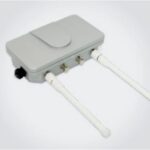A good night’s sleep is one of the cornerstones of a healthy and productive life. Yet, many people underestimate the importance of their beds in achieving this goal. The right bed can profoundly impact your sleep quality, overall health, and well-being. In this comprehensive guide, we will walk you through the key considerations and steps involved in selecting the ideal bed, ensuring you make an informed decision tailored to your unique needs.
Understanding Your Sleeping Needs
Factors to Consider: Sleep Position, Body Weight, and Health Conditions
Before diving into the various types of beds available, it’s crucial to understand your specific sleeping needs. Here are some key factors to consider:
- Sleep Position: Whether you are a back, side, or stomach sleeper will influence the kind of support you need from a mattress.
- Body Weight: Heavier individuals may require firmer mattresses to ensure adequate support, while lighter individuals might prefer softer options.
- Health Conditions: Specific health issues, such as back pain, arthritis, or sleep apnea, can dictate the type of mattress that will provide the best support and comfort.
The Connection Between Mattress Comfort and Sleep Quality
The comfort of your mattress directly influences your sleep quality. A mattress that aligns well with your body contours minimizes pressure points and promotes better spinal alignment, leading to deeper and more restful sleep. Conversely, an ill-fitting mattress can lead to discomfort, poor sleep quality, and even exacerbate health issues.
Types of Beds
Innerspring Mattresses: Pros and Cons
Pros:
- Good support and firmness
- Generally more affordable
- Better airflow, keeping you cooler at night
Cons:
- Shorter lifespan compared to other types
- Can be noisy due to the springs
- Less effective at contouring the body
Memory Foam Mattresses: Benefits and Drawbacks
Benefits:
- Excellent contouring and pressure relief
- Ideal for side sleepers and those with joint pain
- Minimal motion transfer, making it great for couples
Drawbacks:
- Can retain heat, making it less ideal for hot sleepers
- Heavier and harder to move
- Initial off-gassing odor
Hybrid Mattresses: What Sets Them Apart
Hybrid mattresses combine the benefits of innerspring and memory foam for a balanced sleep experience.
Pros:
- Good support and contouring
- Better temperature regulation
- Durable and long-lasting
Cons:
- Can be expensive
- Heavy and difficult to move
- Quality varies significantly between brands
Adjustable Beds: Who They’re For
Adjustable beds allow you to change the angle of your head and feet, offering customizable comfort.
Ideal for:
- People with chronic pain or medical conditions
- Those who enjoy reading or watching TV in bed
- Sleepers who need customized support
Accessories and Bedding
Pillows: Finding the Right Support
The right pillow complements your mattress, ensuring proper neck alignment and comfort. Consider factors like filling material (memory foam, feather, synthetic), loft (height), and firmness when choosing a pillow.
Sheets and Bed Covers: Material and Comfort
Your choice of sheets and bed covers affects your sleep comfort. Look for breathable materials like cotton or bamboo for a cooler sleep experience. Thread count, weave type, and fabric quality also play a role in overall comfort and durability.
Mattress Toppers and Protectors: Enhancing Longevity and Comfort
Mattress toppers add an extra layer of comfort and can adjust the feel of your mattress. Protectors safeguard against spills, allergens, and wear and tear, prolonging the life of your bed.
Bed Selection Guide
Step-by-Step Process for Choosing the Ideal Bed
- Assess Your Needs: Understand your sleep position, weight, and any health conditions.
- Research: Look into different mattress types and their benefits.
- Budget: Determine your budget and look for beds within that range.
- Test the Beds: If possible, visit a store to test various mattresses. Spend at least 10-15 minutes lying on each to gauge comfort.
- Read Reviews: Check online reviews and ratings for insights into durability and customer satisfaction.
- Check Warranties and Return Policies: Ensure you have a trial period and solid warranty coverage.
Tips for Testing Beds in-Store or Buying Online
- In-Store: Wear comfortable clothing and bring your own pillow. Spend time in your typical sleeping position on a mattress such as those in Salt Lake City.
- Online: Look for brands with generous trial periods and easy return policies. Pay attention to verified customer reviews.
Maintaining Your Ideal Bed
Regular Maintenance: Cleaning and Rotation
- Cleaning: Follow manufacturer guidelines for cleaning your mattress. Use a vacuum to remove dust and debris.
- Rotation: Rotate your mattress every 3-6 months to ensure even wear.
Signs Your Bed Needs Replacing
- Sagging or indentations
- Persistent discomfort or pain
- Increased allergy symptoms
- Noticeable wear and tear
- Loss of support and comfort
Conclusion
The importance of selecting the right bed cannot be overstated. A good bed is an investment in your health and well-being, leading to better sleep quality and overall life satisfaction. Take your time to research, test, and choose the bed that meets your specific needs. Remember, the perfect bed is out there, and finding it is a step towards improving your sleep and, by extension, your quality of life.









